
Hurricane Information for Kids
What is a Hurricane? Lots of hurricane facts for kids . A fun animated video with everything you need to know about hurricanes. Learn how hurricanes form, hurricane facts, what causes a hurricane?, effects of hurricanes, cyclone information, what’s a hurricane? how long do hurricanes last? hurricane history, hurricane safety, weather storm, famous hurricanes , how hurricanes form and more!!!
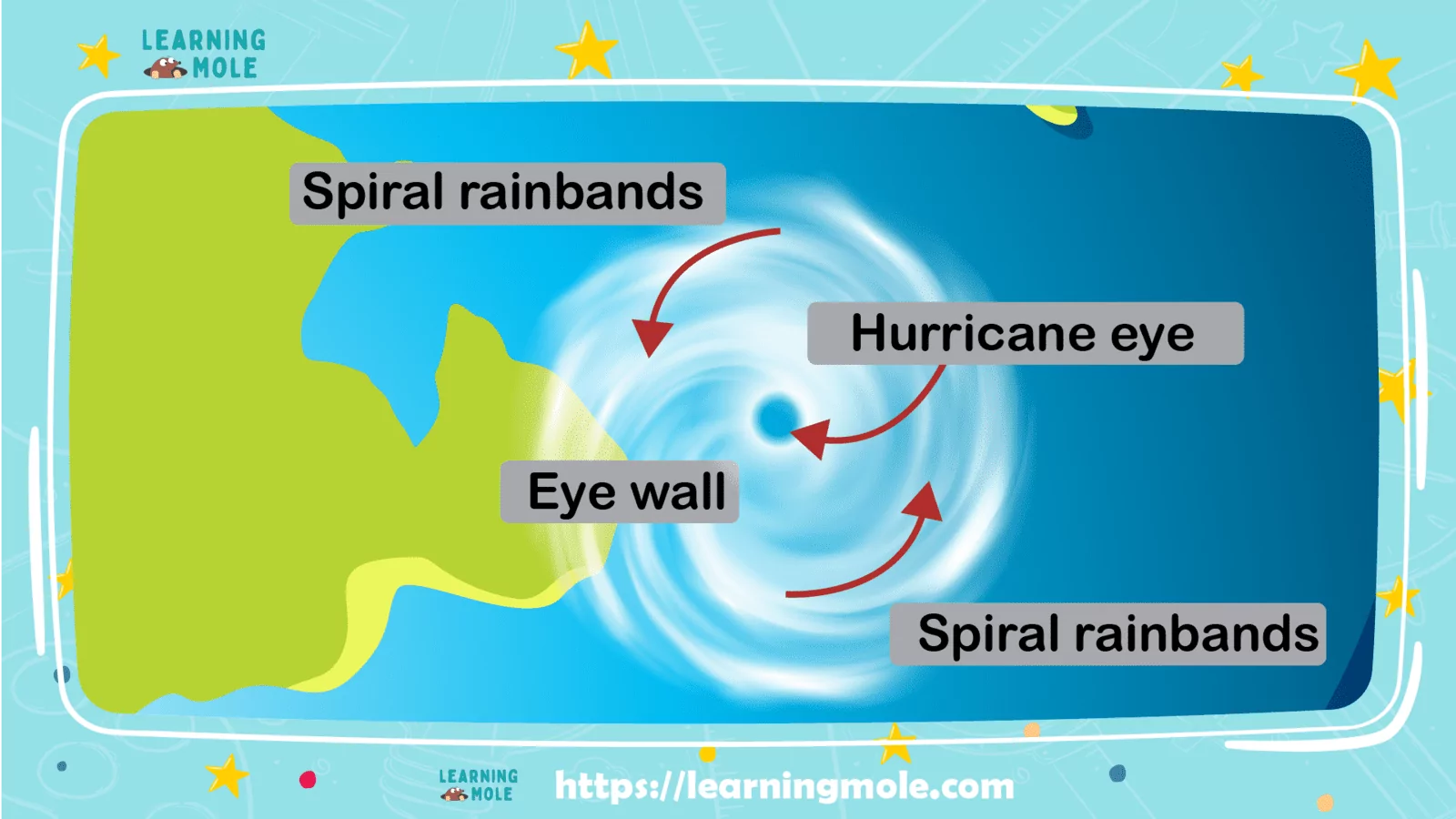
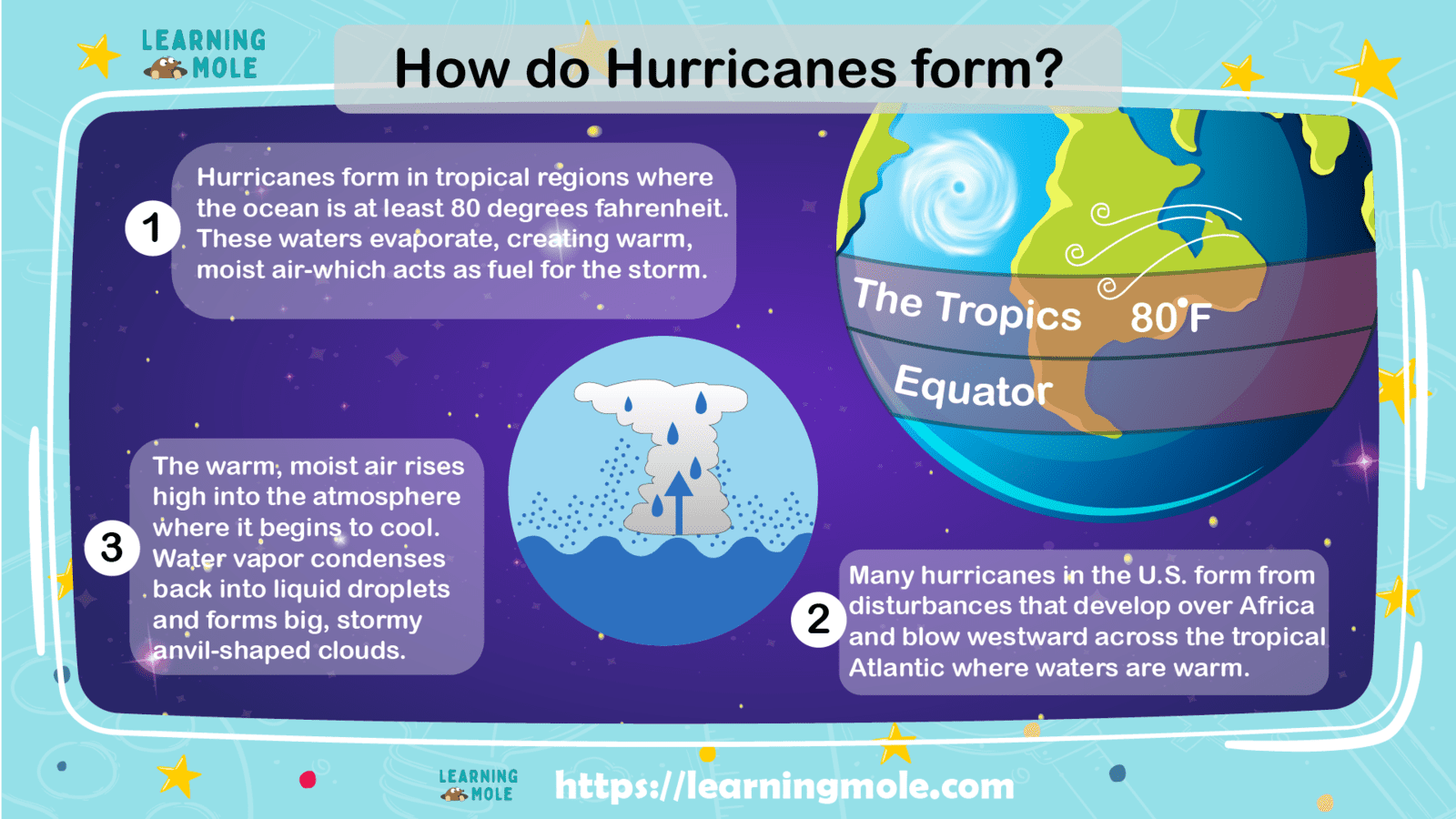
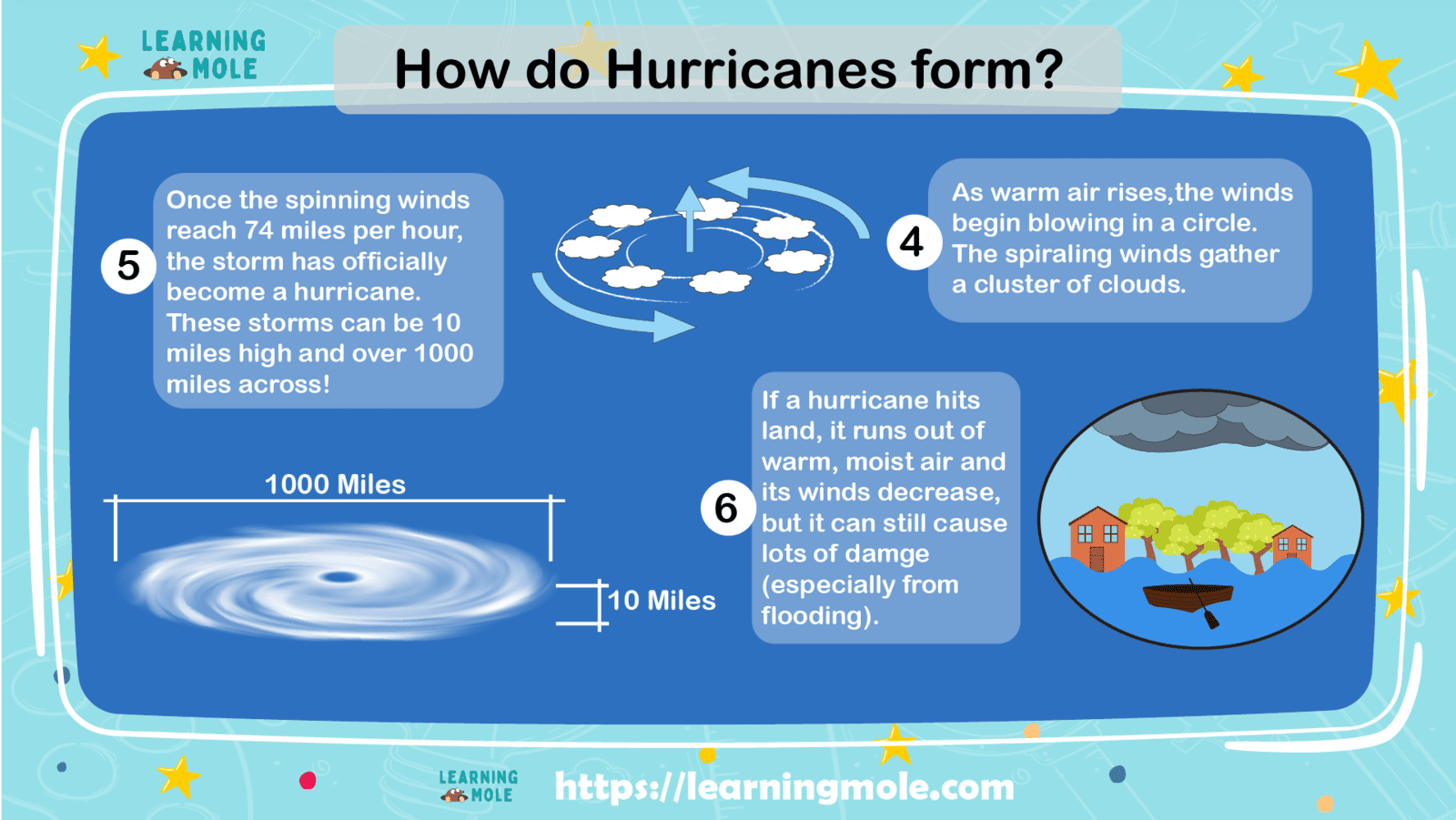
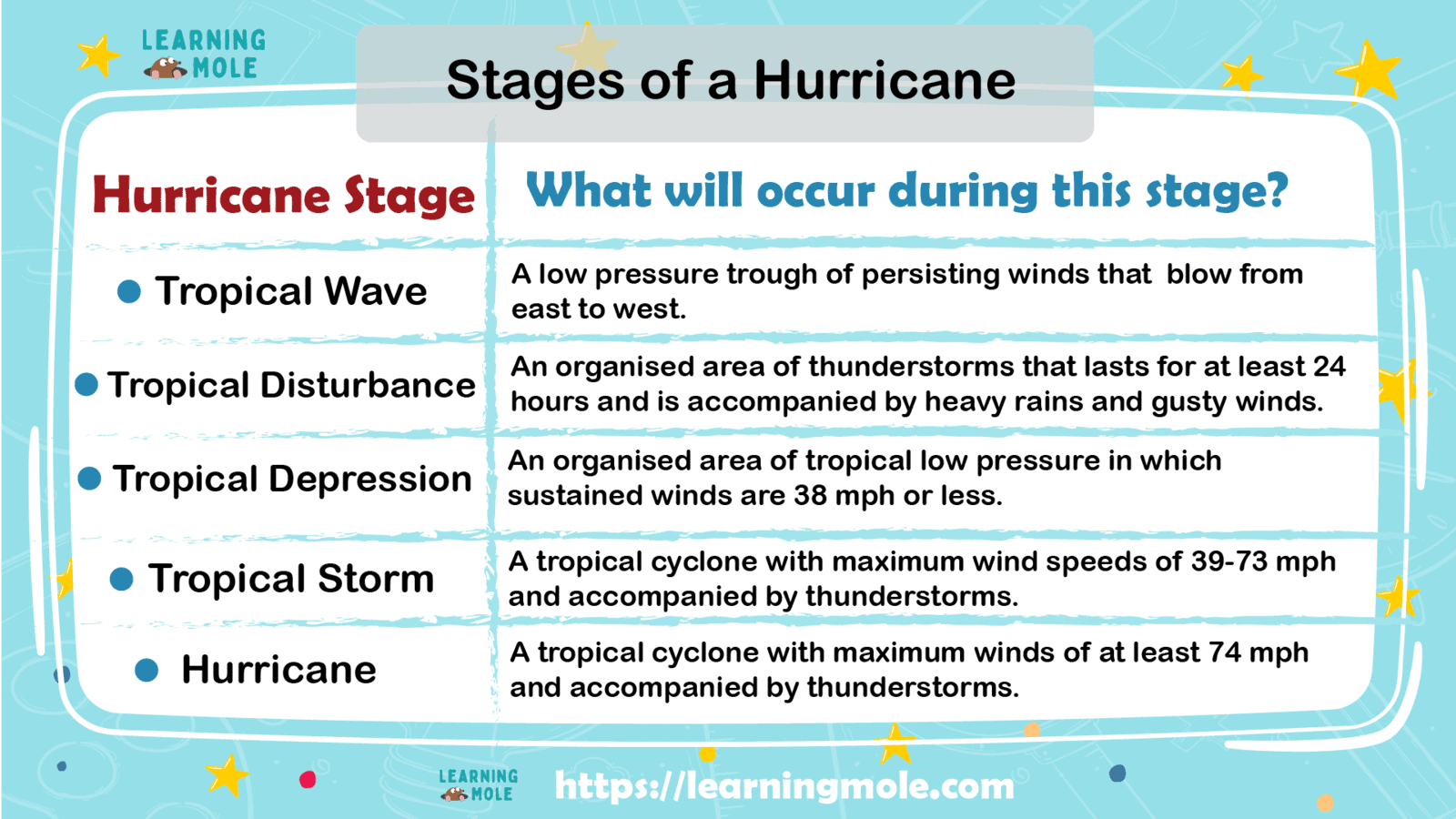
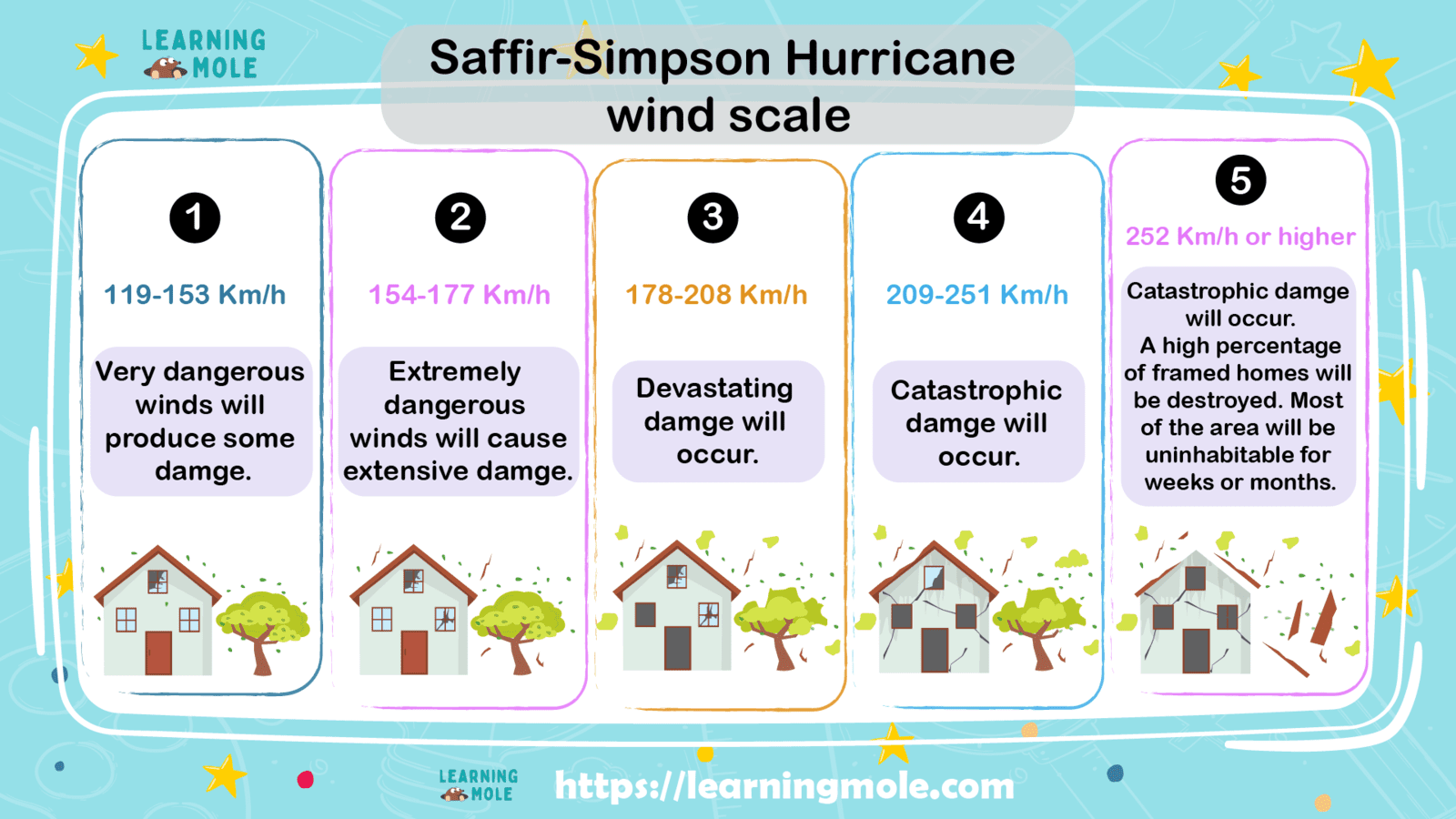
Video Script:
James: Have you ever heard of a hurricane?
Aaron: Yes, a hurricane is a huge storm with speeding winds and lots of heavy rain – did you know that scientists call them tropical cyclones?
James: A huge storm – how huge?
Aaron: Absolutely massive – It can be up to 600 miles across and have strong whirling winds. These winds can reach speeds of 75 to 200 mph.
James: WOW that sounds very scary – but how do hurricanes form?
Aaron: Hurricanes form over the ocean water of the tropics – Hurricanes only form over really warm ocean water of 80°F or warmer.. James: The tropics?
Aaron: Yes, the tropics is the area near the equator – you know that imaginary line drawn around the centre of the earth.
James: Ah yes – so it’s very warm there?
Aaron: Yes very hot. Hurricanes form over the warm ocean water of the tropics. When warm moist air over the water rises, it is replaced by cooler air. The cooler air will then warm and start to rise. This cycle causes huge storm clouds to form. Did you know there are lots of different parts to a hurricane?
James: What do you mean?
Aaron: Well a hurricane has an ‘eye’
James: An eye? Can they see ooooo I am a one eyed hurricane!
Aaron: Not that sort of eye – The centre of the hurricane is called the eye. It is very calm – there are no clouds and the area has a very low air pressure. The most dangerous part of the storm is just on the edge of the eye – it’s called the eye wall – it’s called a wall because it is made up of very heavy clouds. The wind in here can reach up to 160 mph.
James: I would not like to be in the eye wall – it sounds super dangerous!
Aaron – It is, there are also parts called Rainbands – these bands can cause massive floods when the hurricane reaches the land – they can drop lots of rain.
James: Aaron you said that hurricanes form over the ocean – so how do they cause so much damage?
Aaron: When they get lots of powers they can strike land. The damage is usually caused by massive flooding and a storm surge.
James: A storm Surge – what’s that?
Aaron: A storm surge is when the water levels in the ocean rise along coastal areas because of the powerful storm – this can cause flooding – Hurricanes also cause damage with the high speed winds – these can blow down trees and even blow the roofs of houses! Sometimes hurricanes can even create small tornadoes as well.
James: So when do hurricanes strike?
Aaron: The Atlantic hurricane season is from June 1 to November 30, but most hurricanes occur during the winter months. The Eastern Pacific hurricane season is from May 15 to November 30.
James: So how do you know how strong a hurricane is?
Aaron: Well hurricanes are measured by the speed of the winds within them.
James: So category 5 is the worst?
Aaron: Yes definitely – One of the worst hurricanes in history was the Galveston hurricane in the 1900s, which devastated the city and killed between 6,000 and 12,000 people – mostly from drowning. That’s frightening. The 1970 Bhola Cyclone that struck Bangladesh killed over 300,000 people. Cyclones, hurricanes and typhoons are just different names for the same thing.
James: So how big can hurricanes get?
Aaron: It can be up to 600 miles across and have strong winds spiraling inward and upward at speeds of 75 to 200 mph. Each hurricane usually lasts for over a week, moving 10-20 miles per hour over the open ocean. The largest hurricane on record is Typhoon Tip, which occurred in 1979 in the northwest Pacific. With a diameter of around 2,220km, it was nearly half the size of the United States!
James: Typhoon Tip – do all hurricanes have names?
Aaron: Yes,
James: Who names hurricanes?
Aaron: Hurricanes in the Atlantic are named based on a list of names given by the World Meteorological Organisation. The names go in alphabetical order – so the first storm of the year will have a name that starts with the letter ‘A’. There are six lists of names and every year a new list is created.
James: So the first hurricane of the year could be called Hurricane Aaron?
James: I didn’t know that hurricanes were so interesting and dangerous – I have heard of hurricane hunters who are they?
Aaron: The brave “hurricane hunters” work for the National Oceanic and Atmospheric Administration (NOAA). Each mission lasts about ten hours, with the crews passing four to six times through the storm. The planes carry radar, sophisticated computers, and weather instruments that determine characteristics such as temperature, air pressure, wind speed, and wind direction inside the hurricane. By mission’s end, NOAA can warn everyone in the hurricane’s path.


Leave a Reply